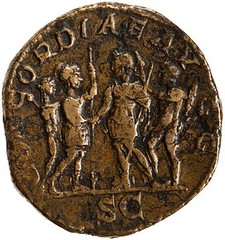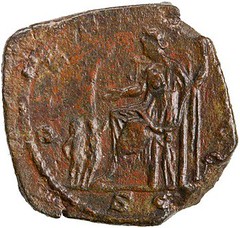
PREV ARTICLE
NEXT ARTICLE
FULL ISSUE
PREV FULL ISSUE
THE IMPERIAL FAMILY ON ROMAN COINAGE
A July 15, 2016 post on the American Numismatic Society's Pocket Change blog was authored by Sam Caldis of Brown University
who is taking part in the 2016 Eric P. Newman Graduate Seminar in Numismatics. The topic is the Imperial Family on Third Century Roman
Coinage. -Editor
 
Coins played a significant role in shaping the public image of the Roman imperial family. The majority of the coins which left the central imperial mints featured the emperor himself and emphasized his activities and virtues, from (re)conquering Britain to his close friendship with Hercules. However, emperors did not always appear solo on their coinage- wives, ancestors, and descendants could all be placed on coins to highlight other marks of distinction for the regime, such as proclaiming ancestry or demonstrating the security of the succession. Although there has recently been a great deal of interest in the place of members of the imperial house on coinage, one aspect which has been largely ignored is the development of familial types – coins which display at least two members of the imperial family together on either the obverse or reverse of a coin. These types appear early on – Augustus minted coins with his chosen successors, Gaius and Lucius Caesar, together on the reverse. By the end of the reign of Septimius Severus (193-211), familial types had become more common. This is in large part due to the prominence of his two potential heirs, Caracalla (198-211) and Geta (209-211), and their powerful mother, Julia Domna.
To read the complete article, see:
THE BOOK BAZARREWayne Homren, Editor The Numismatic Bibliomania Society is a non-profit organization promoting numismatic literature. See our web site at coinbooks.org. To submit items for publication in The E-Sylum, write to the Editor at this address: whomren@gmail.com To subscribe go to: https://my.binhost.com/lists/listinfo/esylum All Rights Reserved. NBS Home Page Contact the NBS webmaster 
|
